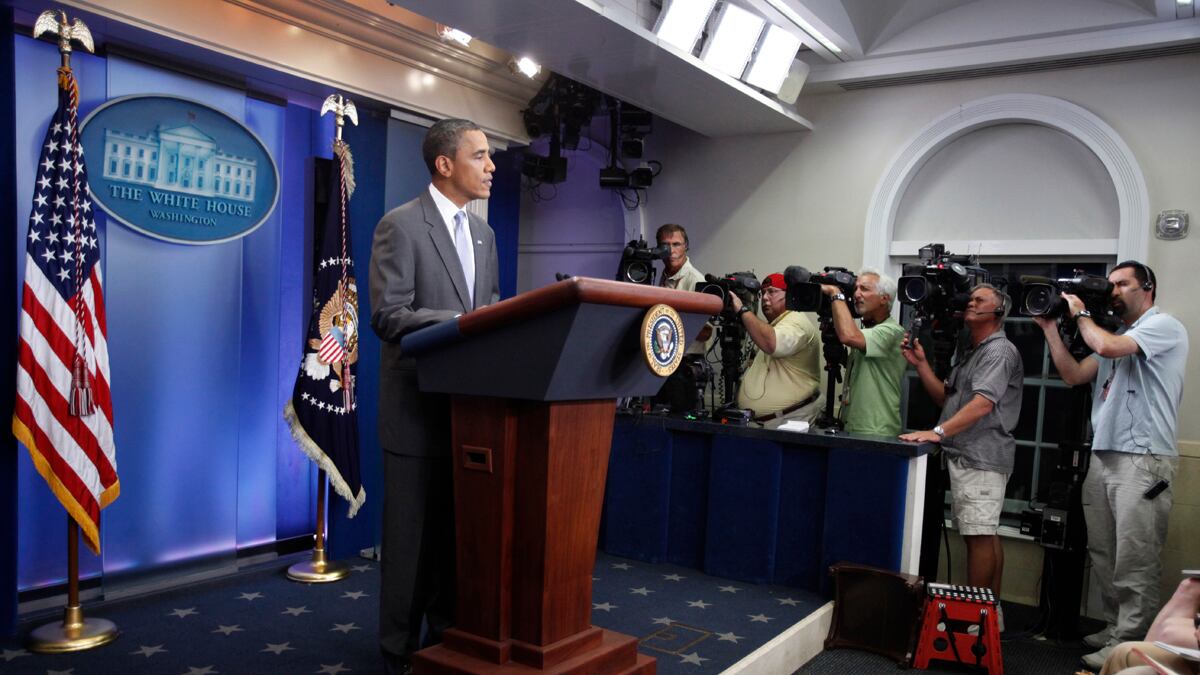While the details of the debt-ceiling deal remain fuzzy, this much is clear: Barack Obama may be president, but the Tea Party is now running Washington. How did this happen? Simple: This is what American politics looks like when there’s no left-wing movement and no war.
Let’s start with the first point. Liberals are furious that President Obama agreed to massive spending cuts, and the promise of more, without any increase in revenue. They should be: Given how much the Bush tax cuts have contributed to the deficit (and how little they’ve spurred economic growth), it’s mind-boggling that they’ve apparently escaped this deficit-reduction deal unscathed.
But there’s a reason for that: Since the economy collapsed in 2008, only one grassroots movement has emerged in response, and it’s been a movement of the right. Compare that with what happened during the Depression. In 1933, Franklin Roosevelt assumed the presidency and launched the hodgepodge of domestic programs that historians call the first New Deal. By 1935, however, he was looking warily over his left shoulder at Huey Long, whose “Share our Wealth” movement demanded that incomes be capped at $1 million and every family be guaranteed an income no less than one third the national average.
At the same time, the Townsend plan to guarantee generous pensions to every elderly American had organizers in every state in the Union. To be sure, FDR had vehement opponents on his right, but he was at least as concerned about the populist left, which helps explain why he enacted the more ambitious “second New Deal,” which included Social Security, the massive public jobs program called the Works Progress Administration, and the Wagner Act, which for the first time in American history put Washington on the side of labor unions.
Obama, like FDR, had a reasonably successful first two years: a stimulus package that, while too small for the circumstances, was still large by historical standards,, and a health-care bill that while subpar in myriad ways, still far exceeded the efforts of other recent Democratic presidents.
And then, unlike FDR, he ran into a grassroots movement of the right. Historians will long debate why the financial collapse of 2008 produced a right-wing populist movement and not a left-wing one. Perhaps it’s because Obama didn’t take on Wall Street; perhaps it’s because with labor unions so weak there’s just not the organizational muscle to create such a movement; perhaps it’s because trust in government is so low that pro-government populism is almost impossible.

Whatever the reason, it was the emergence of the Tea Party as the most powerful grassroots pressure group in America that laid the groundwork for Sunday night’s deal. The fact that polling showed Obama getting the better of the debt-ceiling debate barely mattered. The 2010 elections brought to Congress a group of Republicans theologically committed to cutting government. And they have proved more committed, or perhaps just more reckless, than anyone else in Washington.
But it’s not just the absence of a mass left-wing movement that explains last night’s deal. It’s the end of the war on terror. From 9/11 until George W. Bush left office, the war on terror defined the Republican Party. That meant massive increases in defense and homeland-security spending, but it also meant increases in domestic spending—such as the 2004 prescription-drug bill—aimed at ensuring that Bush got reelected so he could perpetuate the war on terror. In that way, war-on-terror politics resembled Cold War politics, in which the right’s desire for guns and the left’s desire for butter usually combined to ensure that all forms of government spending went up.
The Tea Party, by contrast, is a post–war-on-terror phenomenon. Many of the newly elected Republicans are indifferent, if not hostile, to the wars in Afghanistan and Iraq. They’re happy to cut the defense budget, especially since it makes it easier to persuade Democrats to swallow larger cuts in domestic spending. It’s the reverse of the Cold War dynamic. During the Cold War—especially in the Nixon and Reagan years—conservatives accepted that overall spending would go up in order to ensure that some of that increase went to defense. Today, conservatives accept defense cuts in order to ensure that overall spending goes down.
The good news is that the Tea Party, more than Barack Obama, has now ended the neoconservative dream of an ever-expanding American empire. The bad news is that it has also ended whatever hopes liberals once entertained that roughly 100 years after Theodore Roosevelt and Woodrow Wilson, roughly 75 years after the New Deal and roughly 50 years after the Great Society, we were living in another great age of progressive reform.
Given the era of fiscal scarcity we’re now entering, those neocon and progressive dreams are now likely dead for many years to come. Meanwhile, the Tea Party’s dream of a government reduced to its pre-welfare-state size becomes ever real.






